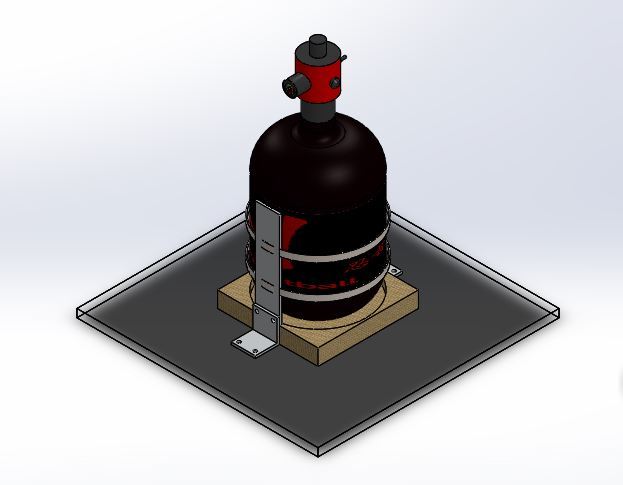No. The blast 'container' will - like a pipe bomb's pressure vessel - only let the internal pressure go even higher before catastrophically yielding. And causing even more damage.
The violent release of pressure from the 4500 psig tank must be either gradually relieved (through the relief valve to a vent pipe best of all away from the tank itself and the fire (??) around the tank;
or
the tank and its square plate must be surrounded by a very, very thick wall "blast shield" with an "open roof" so the explosive force (the vented energy from the compressed or flammable fluid as it heats up from fire) goes "up" into the air above the tank. Assumes an outdoor location obviously. This vented enclosure has been used for explosive factories since before DuPont.
The square plate now used is sufficient to prevent the tank from falling over - unless run into by a vehicle of some kind.
Looking at the image above again:
The steel PLATE at the bottom won't be likely to fall over, but the two little bitty sheetmetal angles are only mounted with two screws each to the small (wood?) square, then those angles are mounted by two more screws to the skinny sheetmetal (al ?) vertical members, which are then tie-wrapped to the other vertical.
So that total assembly as a whole is very, very weak against side loads, impact loads, or being kicked over by a passing pedestrian.
As above, you cannot put the PV into a bigger PV and expect to improve safety. You CAN direct the vented gasses from the relief valve somewhere else that is safer, and you can direct the "blast" fragments and pressure wave safely "up" towards free space if outdoors. You should improve the physical mounting with something more than sheet metal bands and wood screws.



